Changes in resting state functional connectivity after repetitive transcranial direct current stimulation applied to motor cortex in fibromyalgia patients
- PMID: 26842987
- PMCID: PMC4741001
- DOI: 10.1186/s13075-016-0934-0
Changes in resting state functional connectivity after repetitive transcranial direct current stimulation applied to motor cortex in fibromyalgia patients
Abstract
Background: Fibromyalgia (FM) is a chronic, centralized pain condition characterized by alterations in the functional, chemical, and structural brain networks responsible for sensory and mood processing. Transcranial direct current stimulation (tDCS) has emerged as a potential treatment for FM. tDCS can alter functional connectivity (FC) in brain regions underneath and distant to the stimulating electrode, although the analgesic mechanisms of repetitive tDCS remain unknown. The aim of this study was to investigate how a clinically relevant schedule of tDCS sessions alters resting state FC and how these changes might relate to clinical pain.
Methods: Resting state functional magnetic resonance imaging data were collected from 12 patients with FM at baseline, after 5 days of sham treatment, and after 5 days of real tDCS with the anode over the left primary motor cortex (M1) and the cathode over the right supraorbital cortex. Seed to whole-brain FC analyses were performed with seed regions placed in bilateral M1, primary somatosensory cortices (S1), ventral lateral (VL) and ventral posterolateral (VPL) thalami, and periaqueductal gray (PAG).
Results: Stronger baseline FC between M1-VL thalamus, S1-anterior insula, and VL thalamus-PAG predicted greater analgesia after sham and real tDCS. Sham treatment (compared with baseline) reduced FC between the VPL thalamus, S1, and the amygdala. Real tDCS (compared with sham treatment) reduced FC between the VL thalamus, medial prefrontal, and supplementary motor cortices. Interestingly, decreased FC between the VL/VPL thalamus and posterior insula, M1, and S1 correlated with reductions in clinical pain after both sham and active treatments.
Conclusions: These results suggest that while there may be a placebo response common to both sham and real tDCS, repetitive M1 tDCS causes distinct changes in FC that last beyond the stimulation period and may produce analgesia by altering thalamic connectivity.
Figures
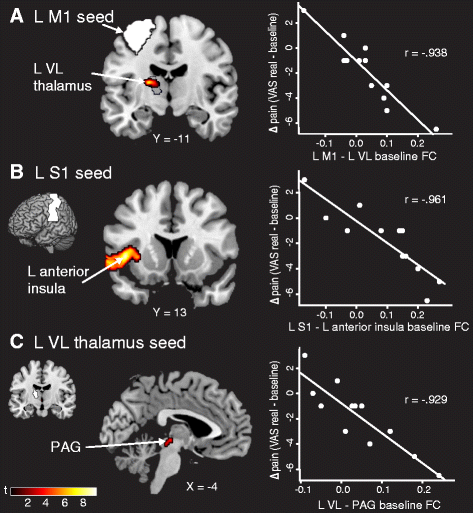
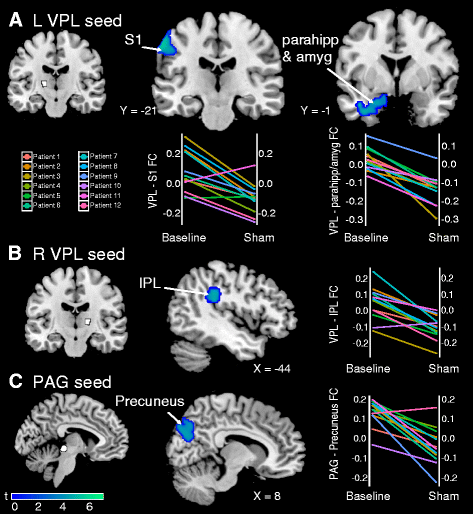
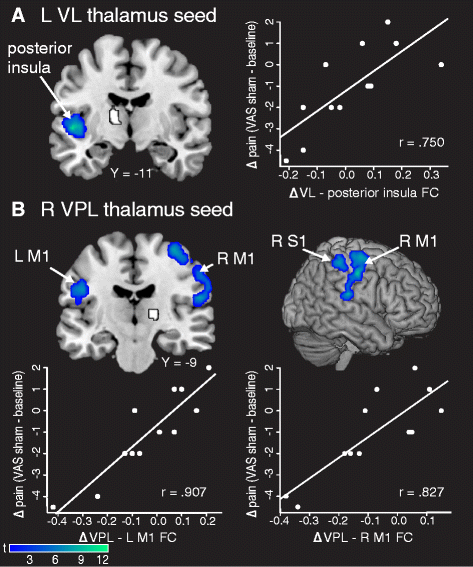
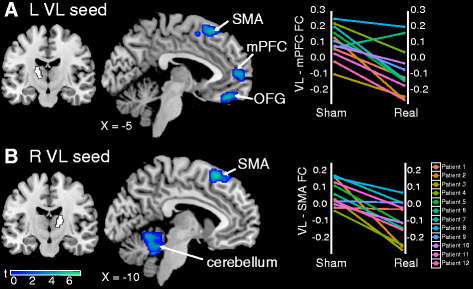
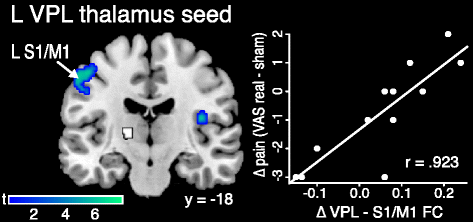
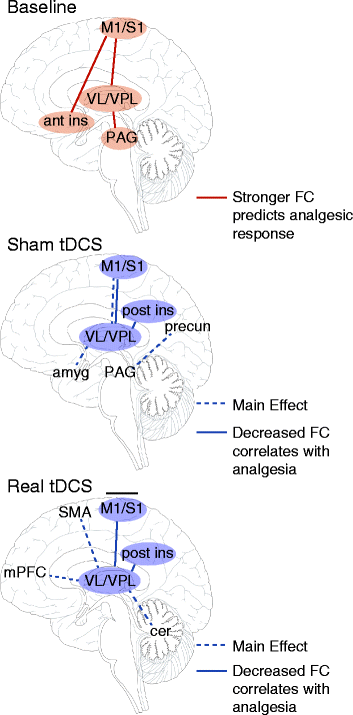
References
Publication types
MeSH terms
Grants and funding
LinkOut - more resources
Full Text Sources
Other Literature Sources
Medical

